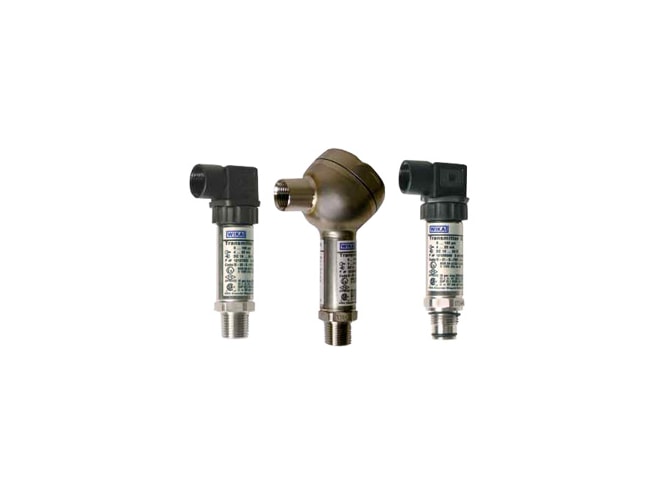
WIKA IS-20 and IS-21 Pressure Transmitters
Precision, intrinsically safe pressure transmitters for hazardous area applications.

Overview
Features
- Piezoresistive sensor and thin-film sensor technology
- Pressure ranges from 50 InWC to 15,000 psi
- Available with non-clogging flat diaphragm (IS-21)
- Available with integral stainless steel junction box
- Wide range of process and electrical connections available
- Accuracy: 0.25% full scale
- FM, CSA approval for:
- Intrinsically safe Class I, II and III Division 1, Group A, B, C, D, E, F, G; Dust Class II and III Division 1, Group E, F, G - Class I, Zone 0, AEx ia II C
- Ex- protection EEx ia I/II C T6 according to ATEX for: Gases, vapors and mist: Connection to Zone 0, Zone 1 and Zone 2; Dust: Connection to Zone 20, Zone 21 and Zone 22; Mining: Category M1 and M2
- Suitable for SIL 2 according to IEC 61508 / IEC 61511
Description
The WIKA IS-20 and IS-21 series of intrinsically safe pressure transmitters are designed for industrial pressure measurement applications in hazardous areas where intrinsically safe ratings are required. The transmitters carry multiple intrinsically safe approvals including FM, ATEX and CSA. These multiple approvals provide for global recognition and acceptance of the intrinsically safe ratings.
WIKA IS-20 and IS-21 pressure transmitters include stainless steel wetted parts featuring an all-welded measuring cell for improved media compatibility. There are no internal soft sealing materials that may react with the media or deteriorate over time. The compact case is also made of stainless steel and is available with environmental protection ratings up to NEMA 6 ( IP 68).
The IS-20 includes an NPT process connection while the IS-21 transmitters feature a flush diaphragm process connection specifically designed for the measurement of viscous fluids or media containing solids that may clog a NPT process connection. Both models are available with an integral stainless steel junction box with internal terminal block for use in extremely harsh environments.
All types require a 10 to 30 volt supply provided by an intrinsically safe power supply or through an approved intrinsically safe zener diode barrier.
Need Help? Call a Calibration engineer at 1-800-884-4967
We're open Mo-Th 8am to 5:30pm. Fr 8am to 5pm ET







